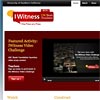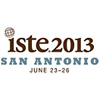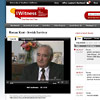http://www.moderni-dejiny.cz/clanek/vola-londyn/
Tři roky po zřízení Centra vizuální historie Malach na Karlově Univerzitě v Praze coby přístupového místa k Archivu vizuální historie je jeho význam pro výzkumné a vzdělávací aktivity založené na zkoumání svědectví pamětníků neustále potvrzován.
U příležitosti Mezinárodního dne památky holocaustu, v rámci druhého ročníku programu půldenních regionálních seminářů byly českým učitelům ve dnech 21. až 23. ledna představeny informační zdroje vytvořené čtyřmi partnerskými institucemi: experti z Jad Vašem, Oddělení pro vzdělávání a kulturu Židovského muzea v Praze, Památníku Terezín a USC Shoah Foundation společně s místními aktivisty a za podpory karlovarského inspektorátu České školní inspekce představili vzdělávací materiály vytvořené jejich organizacemi. Seminář tentokrát navštívil Karlovy Vary, Ostrov nad Ohří a Plzeň.
Over 70 new testimonies have been added to IWitness to increase the scope of experiences students can engage with. IWitness now features 1,321 video testimonies from the Visual History Archive that allows teachers and their students to search, watch, and learn directly from the eyewitness to history. IWitness activities allow students to construct multimedia projects that integrate testimony clips together with footage from other sources, as well as photographs and maps, voiceover audio, music and text.
Dr. Kori Street, Director of Education for USC Shoah Foundation, will be participating in a panel at the upcoming International Society for Technology in Education (ISTE) Conference in San Antonio, Texas from June 23 through June 26. The annual ISTE conference and exposition is the premier conference for educators and education leaders from around the world who are engaged in advancing excellence in learning and teaching through the innovative and effective uses of technology.
Dr. Dan Leshem and Dr. Amy Carnes of USC Shoah Foundation will be leading a course to Rwanda this summer that will allow USC students to study post-genocide reconstruction. The course, Rebuilding Rwanda: Memory, Testimony, and Living Together after Genocide, was developed in conjunction with Dr.
In the nineteen nineties, videotape was the most effective format on which to record the testimonies of Holocaust survivors and other witnesses. But like all physical storage media, tape has a shelf life, and in 2008 the Institute and USC Information Technology Services (ITS) started a multimillion-dollar project to digitize the entire Visual History Archive.
Facing History and Ourselves is partnering with the USC Shoah Foundation to explore how Facing History teachers can use IWitness, the Institute’s educational website, to shape teaching and learning experiences for students in a Facing History course.
The students came to the Institute to search for and extract 10 video clips to use for a project in IWitness, the Institute’s award-winning educational website.
Explore IWitness
The USC Shoah Foundation organized an April 25 lecture by Marianne Hirsch, its 2013 Yom Hashoah scholar-in-residence, who discussed her work on postmemory: the relationship that children of Holocaust survivors have with the personal, collective and cultural trauma of their parents.



